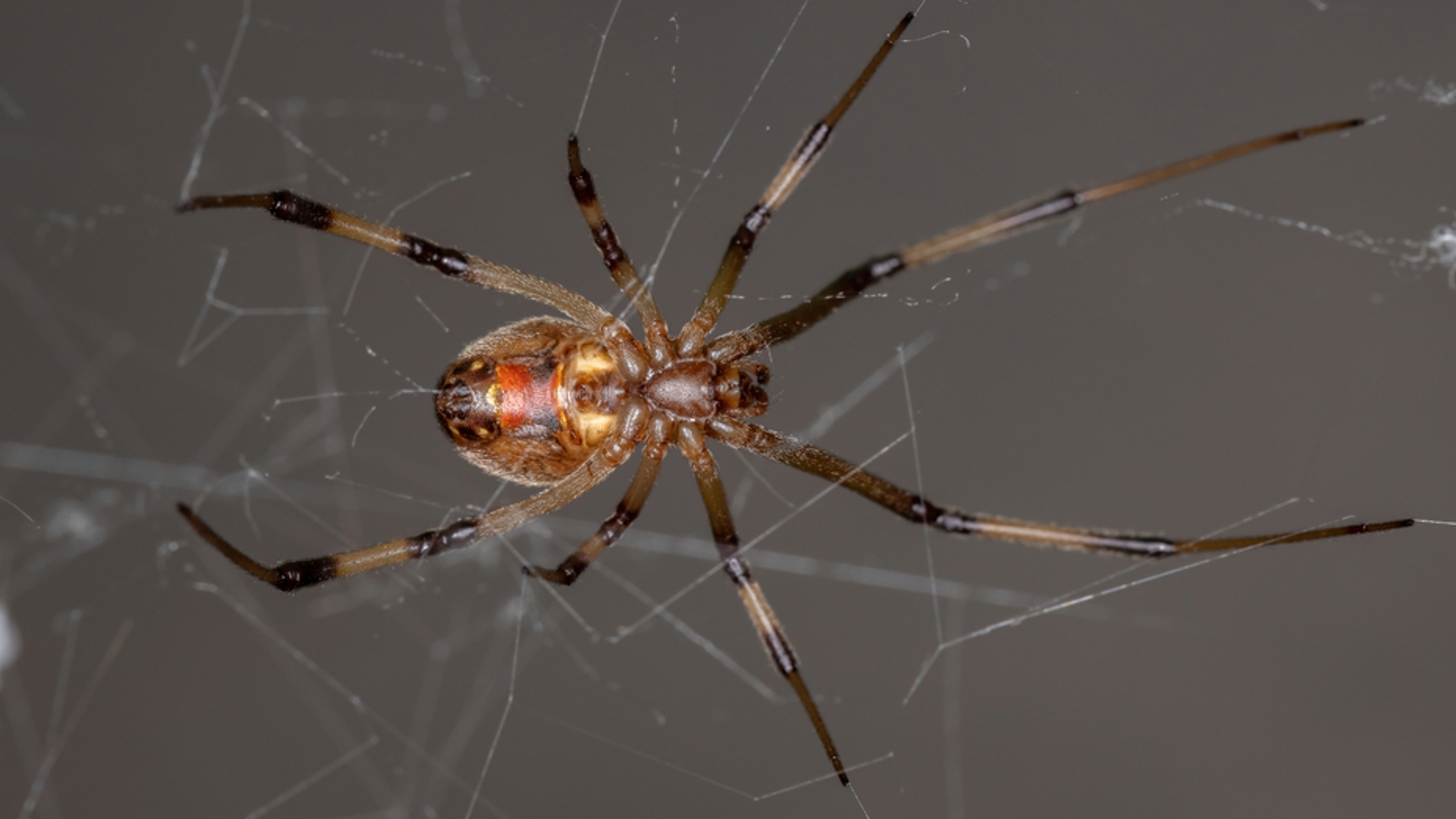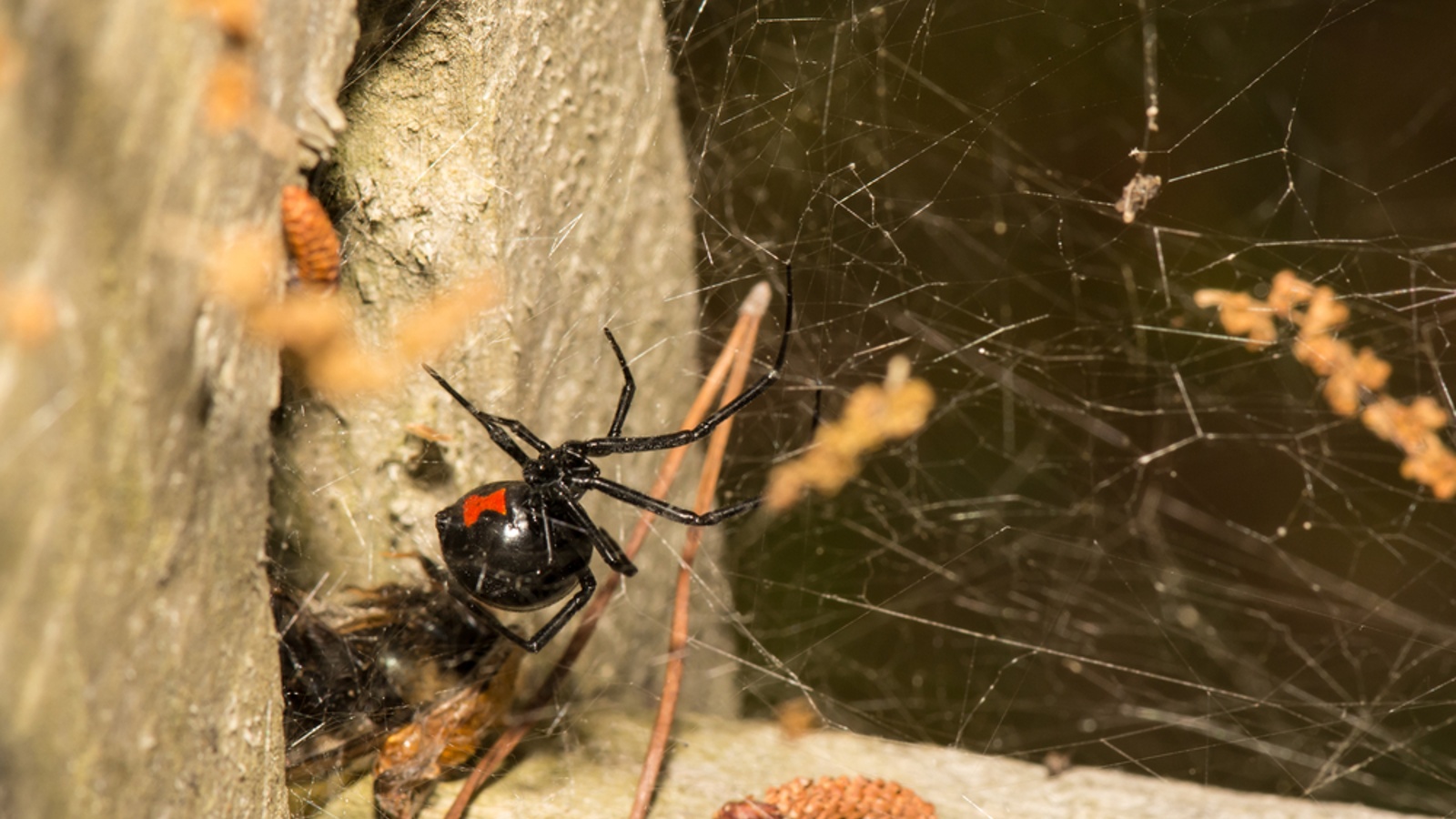Black widows are being slaughtered by their brown widow cousins, and we don't know why
Brown widow spiders, which are invasive to North America, are wiping out black widow populations in the U.S. by aggressively attacking them for no clear reason, a new study shows.

Black widow spiders in the U.S. are being killed off by an unexpected rival: their invasive relatives, but the motivation behind the highly aggressive attacks is not yet clear, a new study finds.
The perpetrators, brown widow spiders (Latrodectus geometricus), likely originated in Africa or South America but have since spread to every continent on Earth apart from Antarctica. Brown widows are from the same genus as black widows, of which there are five species, including three that are native to North America: southern black widows (Latrodectus mactans), western black widows (Latrodectus hesperus) and northern black widows (Latrodectus variolus). But unlike black widows, which can all inflict extremely painful and occasionally lethal bites on humans, brown widow bites rarely cause significant harm to people, likely because they inject less venom into their bites despite having venom that is "drop-for-drop" just as toxic, according to the Center for Invasive Species Research (CISR) at the University of California, Riverside.
In the U.S., brown widow spiders were first spotted in 1935 in Florida, and have subsequently spread across the southern states and into California, according to CISR. Since the invasive species was introduced, southern and western black widow numbers have plummeted, particularly in Florida, where southern black widows have gone "locally extinct" in certain areas.
However, scientists are unsure exactly why this is happening: Other spider species have not been affected by the brown widow's arrival, and there does not appear to be any competition for resources that would force the two widow species to fight one another.
Related: False widow spider preys on baby bat in never-before-seen encounter
In a new study, published Monday (March 13) in the journal Annals of the Entomological Society of America, researchers put solitary brown widows into laboratory tanks with one of three individuals from another spider species — a southern black widow, a red house spider (Nesticodes rufipes) or a triangulate cobweb spider (Steatoda triangulosa), which all overlap with brown widows in the wild — to see how the brown widow reacted to cohabiting with each of the species.
When paired with the non-widow spiders, the brown widows peacefully cohabited with their tankmates in 50% to 80% of the tests. The rest of the time, one spider would kill and eat the other, but there was little difference between which species would end up victorious.
Sign up for the Live Science daily newsletter now
Get the world’s most fascinating discoveries delivered straight to your inbox.

But when adult brown widows were paired with adult black widows, the invasive species killed and consumed the black widows 40% of the time, the pair peacefully cohabitated together 30% of the time, and in the remaining trials the black widows ended up victorious — but only after defending themselves from an initial brown widow attack. However, when sub-adult individuals of both species were mixed, the brown widows killed and ate their counterparts 80% of the time. Overall, brown widows were six times more likely to kill black widows than the other two spider species.
In separate experiments, the team also showed that brown widows produce more offspring than black widows and that those offspring begin to reach maturity faster than black widows. This could explain why sub-adult individuals were so adept at killing younger black widows, which in turn would explain why black widow populations are collapsing in areas where brown widows have invaded, the researchers wrote. However, the researchers were surprised at the stark behavioral differences between brown and black widows.
Related: 11 deadliest spiders
"Brown widows are boldly aggressive and will immediately investigate a neighbor and attack if there is no resistance from the neighbor," study co-author Deby Cassill, an ecologist at the University of South Florida (USF), said in a statement. "But the black widows are extremely shy, counterattacking only to defend themselves against an aggressive spider."
The researchers are unsure why the closely related species react so differently to one another and plan to study brown and black widows in other parts of the world, such as Africa, to see if the same trends apply.
"I would love to see if their [brown widows'] behavior and displacement of black widows is something that they have adapted here in North America, or if this behavior is something they exhibit naturally even in areas where they have coevolved with black widows for much longer periods of time," study lead author Louis Coticchio, a doctoral student of conservation biology at USF, said in the statement.

Harry is a U.K.-based senior staff writer at Live Science. He studied marine biology at the University of Exeter before training to become a journalist. He covers a wide range of topics including space exploration, planetary science, space weather, climate change, animal behavior and paleontology. His recent work on the solar maximum won "best space submission" at the 2024 Aerospace Media Awards and was shortlisted in the "top scoop" category at the NCTJ Awards for Excellence in 2023. He also writes Live Science's weekly Earth from space series.









